After a successful trekking day in Herm we weighed the anchor on Shell Beach Bay and set course to the neighbour island. We were rounding Sark from the north and while passing the bay of La Grève de la Ville it looked like all the buoys were already taken there. This was not a concern for us as we were sailing towards the bay of Dixcart in southeast corner of the island and when the anchor had dug into the bottom of the bay the log showed that we had sailed for 8 miles.
It would have been half a distance if we went into the bay of Havre Gosselin. However we were recommended the bays in southeast corner of the island. In addition of being better sheltered from the western winds it is also easier to get ashore as there is no need to climb up the 150 very steep steps on the cliffs Havre Gosselin.
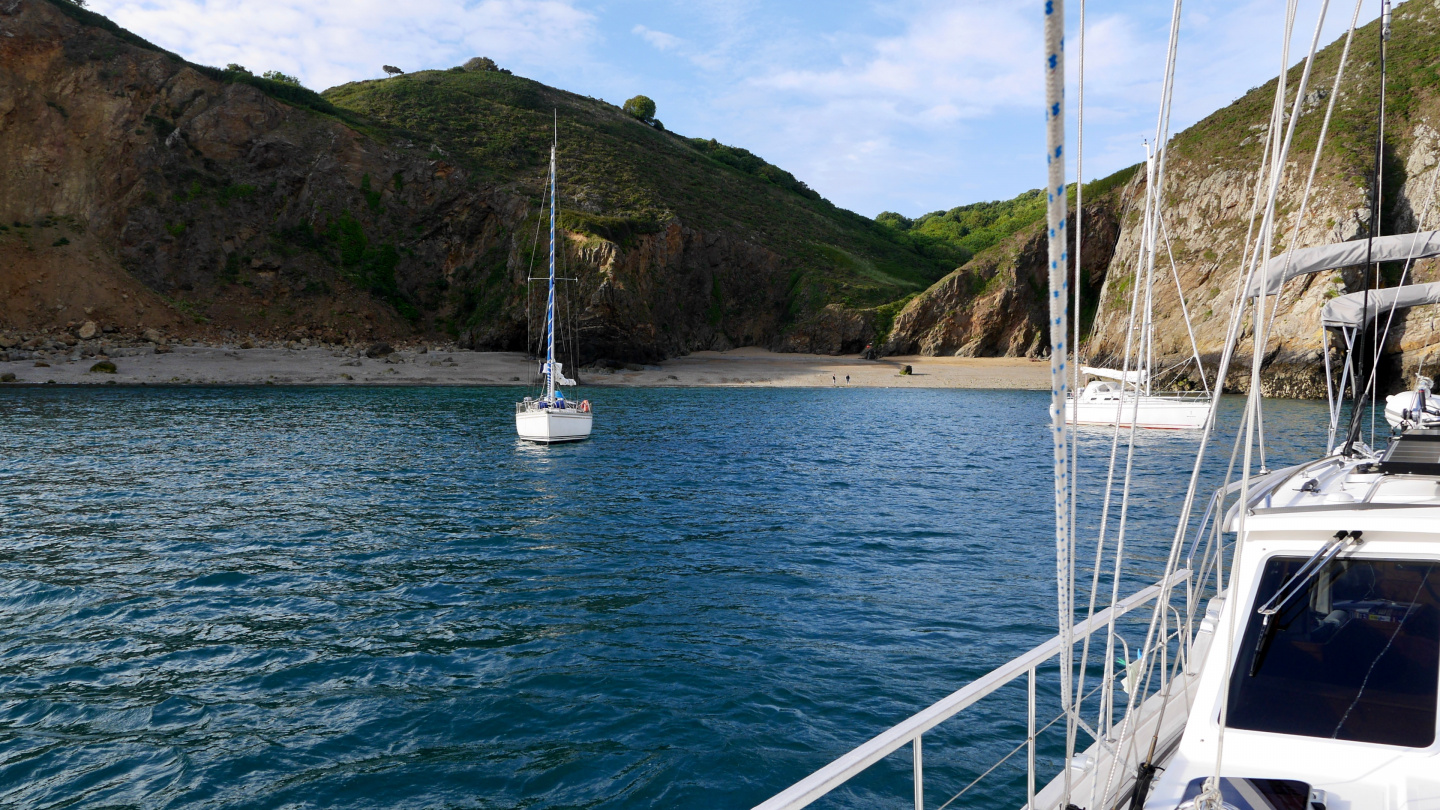
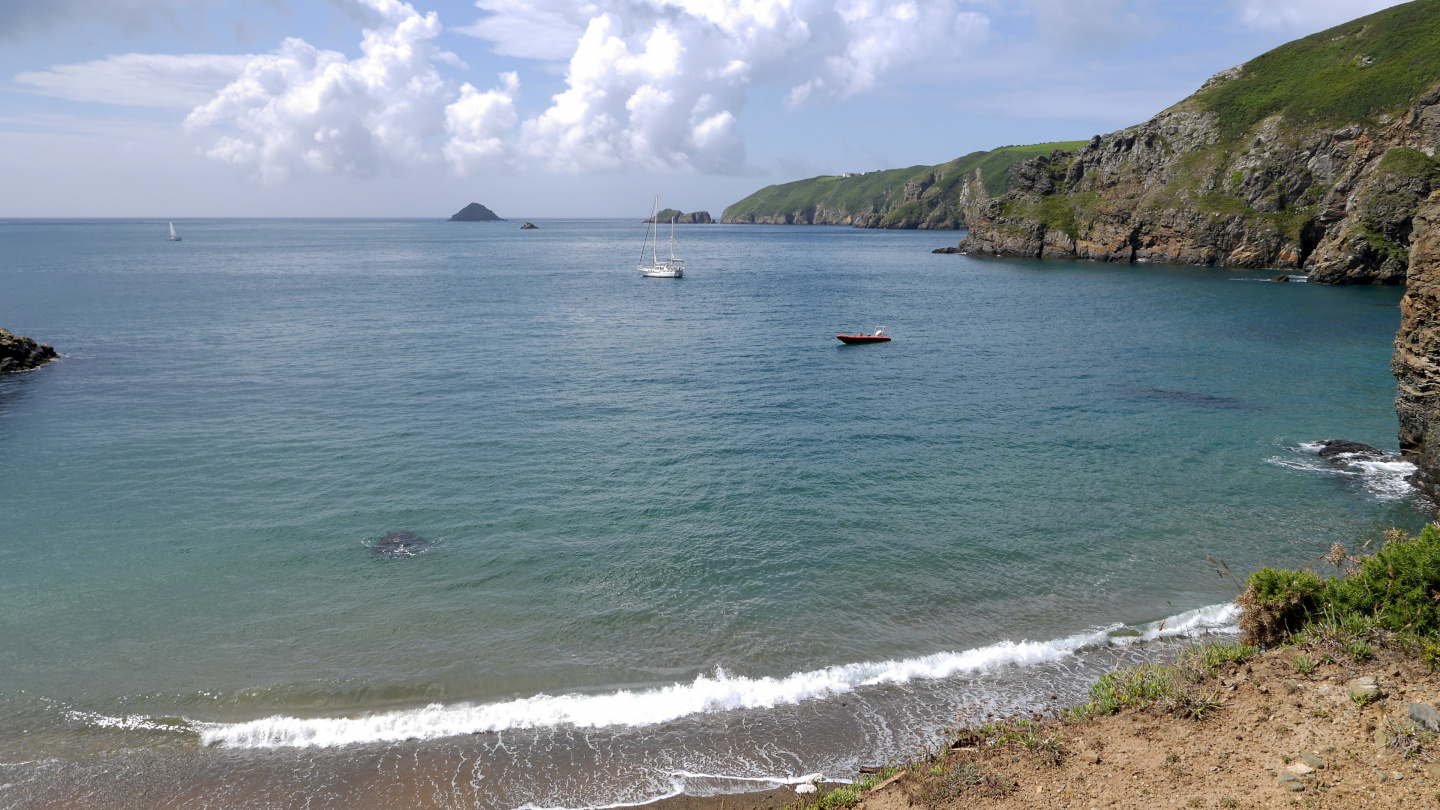
The Dixcart Bay should have been well sheltered in the forecast winds from SW to NW but from somewhere the annoying swell reached the bay. We spent a restless night while Suwena was swaying with the waves. First thing in the morning the other four boats weighed their anchors and soon disappeared over the horizon. The whole bay was only for us and Sark was still waiting.
We left Pikku Suwena next to a small waterfall on the beach and went towards the centre of the island. The paths were very different compared to Herm with roots and stubs. The paths that were partly in bad shape are passing though the valley forest. We also passed a couple of streams that could be crossed by a narrow bridges made from a couple of wood planks. Just after 20 minutes the footpath widened into a road that could be driven with a quad bike.
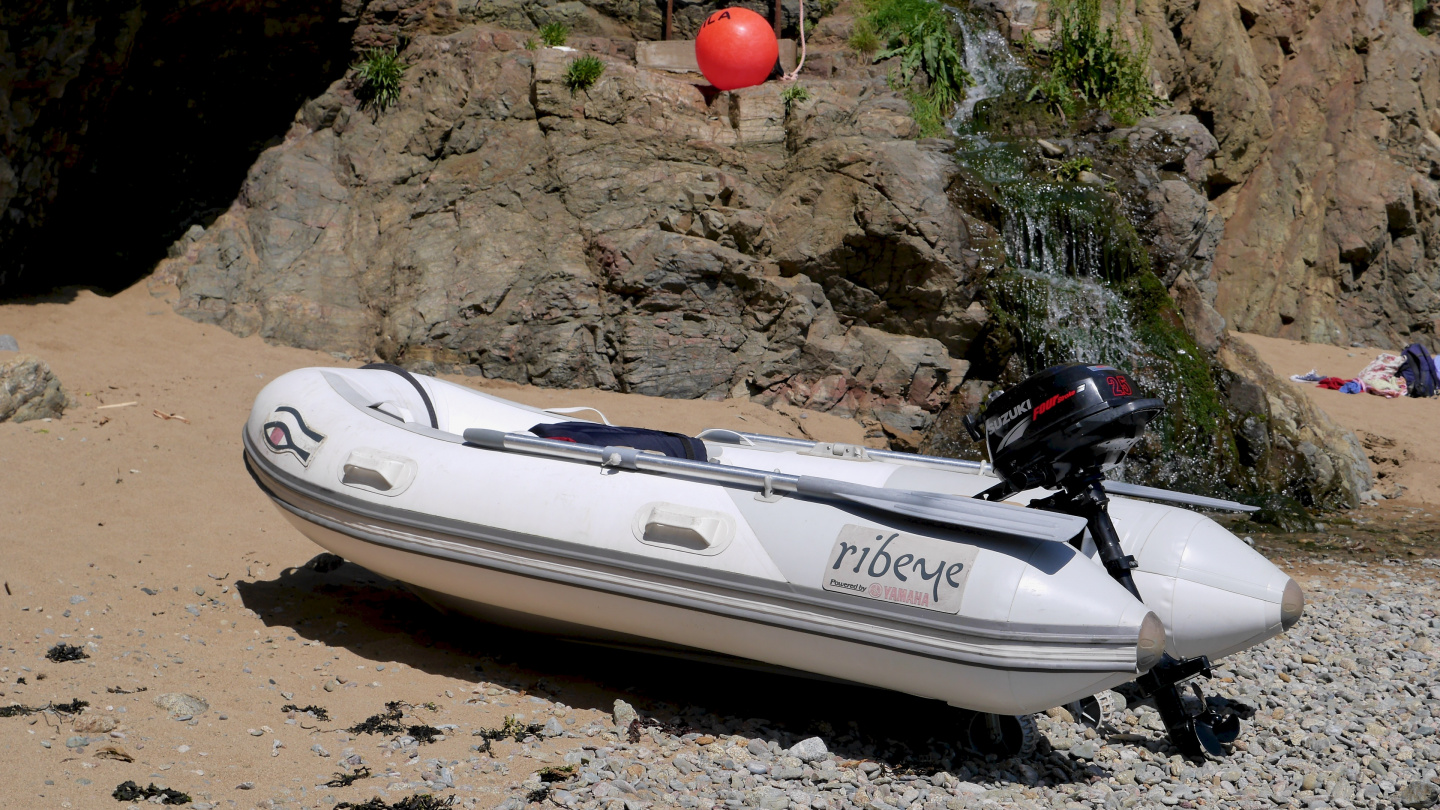
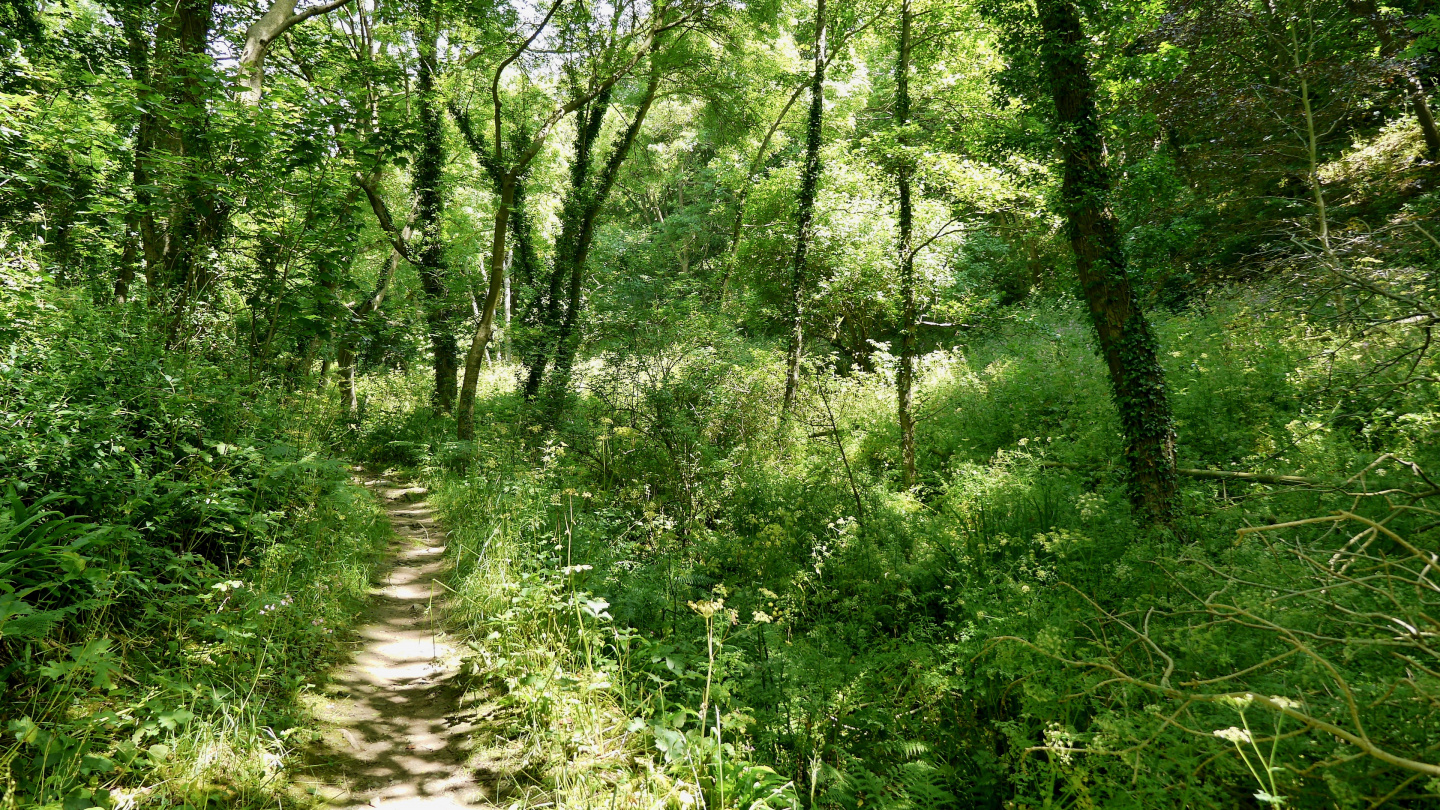
At first we headed to the central village that is simply called the Village and its main street is called tersely the Avenue. There is actually a handful of streets with a few hotels and restaurants in the centre. The hey day of Sark seemed to be clearly behind and many properties were in poor condition or just empty. Of course the population of Sark has decreased as well. Currently there are only 450 year-round residents on Great Sark and 40 on Little Sark.
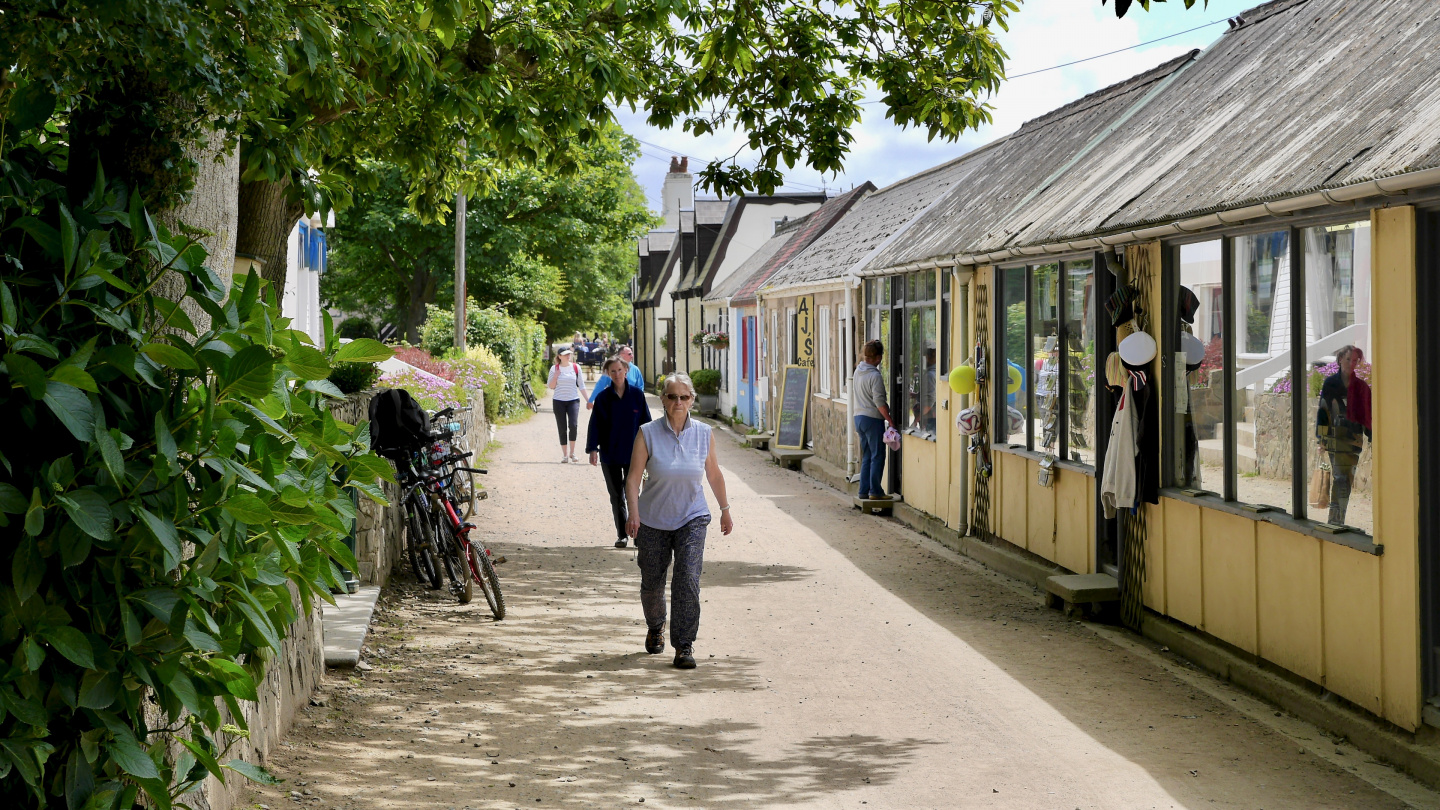
We picked a restaurant for lunch and had sandwiches filled with Sark crab. Andrus downloaded the latest weather forecast and to our annoyance the next low pressure was coming earlier than in a previous estimate. The wind would pick up during the wee hours of next day and keep blowing for several days. We need to visit Finland and we have to reach the coast of France for getting into the train to Paris. Day’s agenda was quickly changed. We’ll stay in Sark for a few hours and then depart towards France.
We had got a recommendation about having a tour of the island by horse-drawn carriage. With a horse we could see more of the island compared to walking. After a short search we hired a Lucy horse with a charming gentleman driving it for a 90 minutes tour.
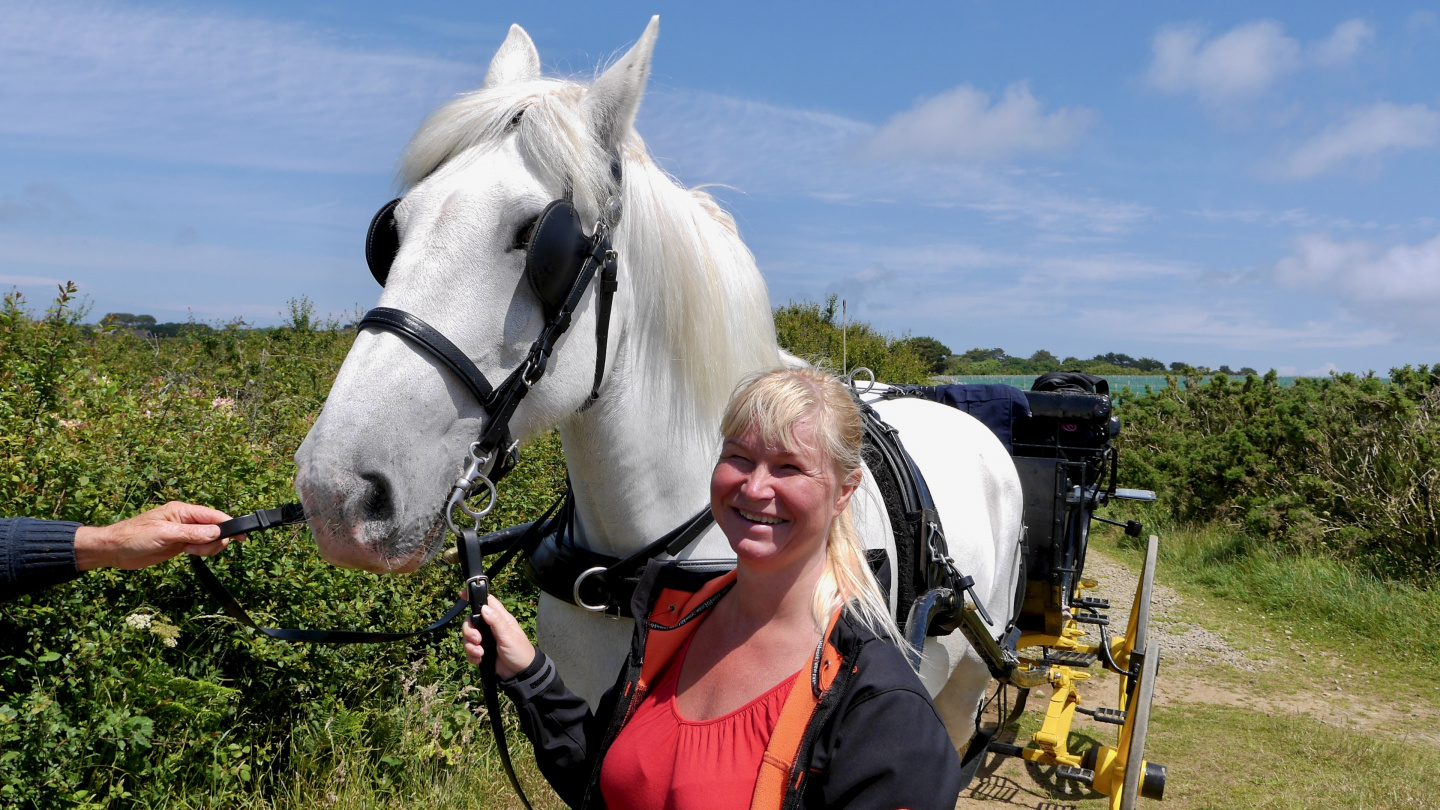
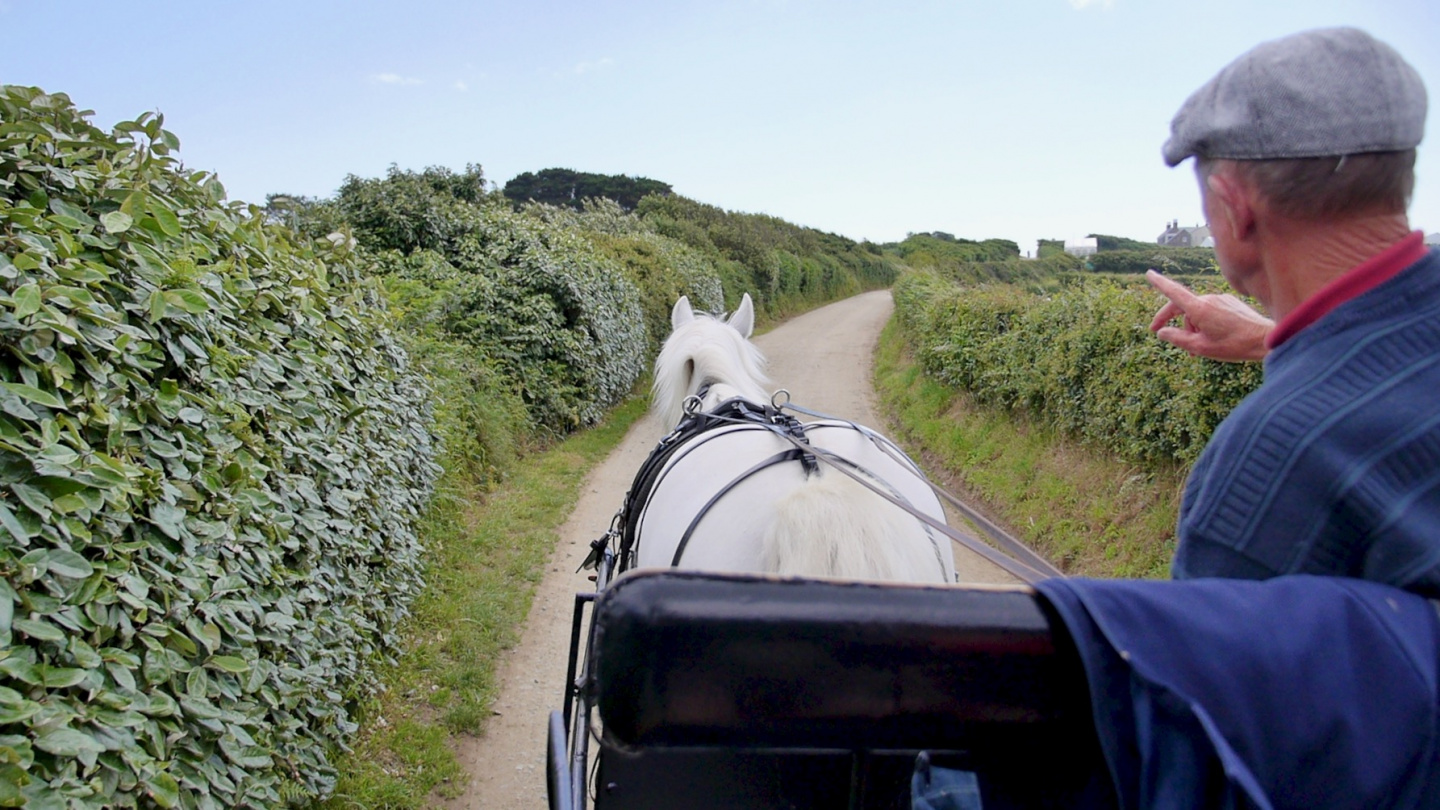
Horse tours are a major part of the tourism in Sark and currently there are 11 horses in total giving presentations of the island to tourists. The driver described both the history of Sark and its current status. Including the various affairs in many places we passed. We stopped at the Pilcher Monument above the anchorage of Havre Gosselin. The masts of the boats were swinging happily and there was definitely some swell on this bay as well.
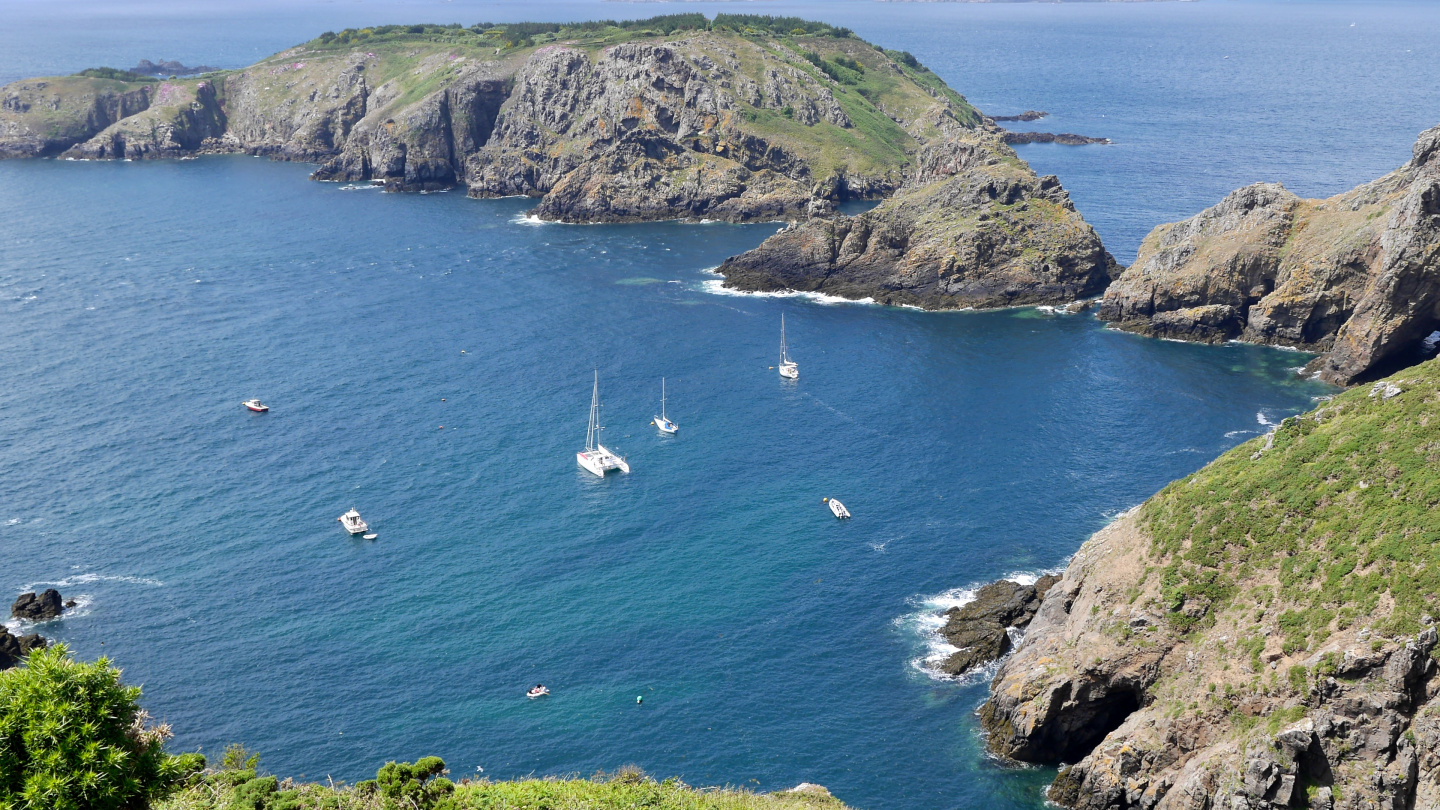
Lucy also took us to the isthmus of La Coupée that is joining Great Sark and Little Sark together. We walked to Little Sark. Nowadays it’s easy and the isthmus that is three metres wide and 90 metres long is protected by railings. Back in the 19th century it was less than a meter wide and no railings with the drop of 80 metres on either side. Many did not dare to cross it and children had to crawl or otherwise the wind could take them.
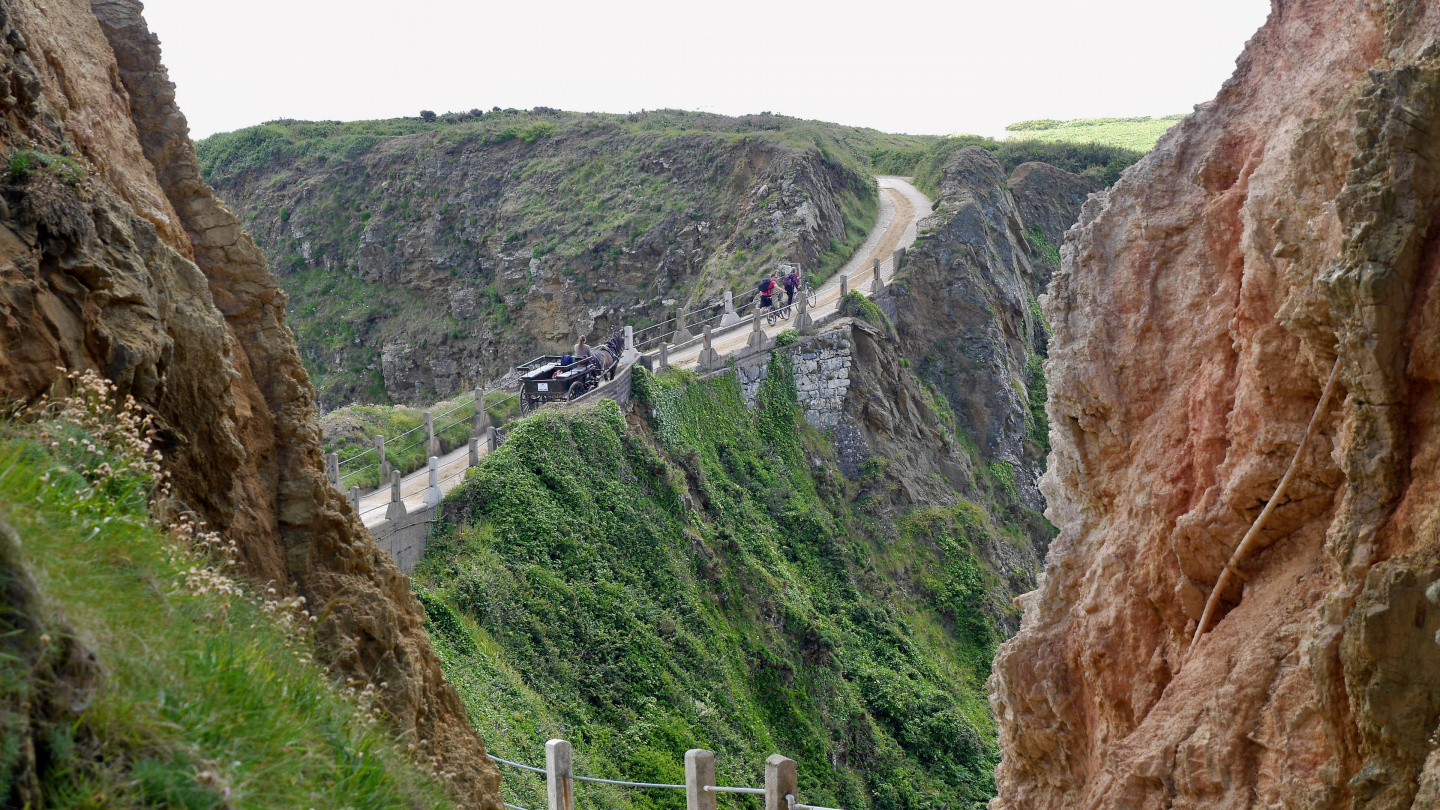
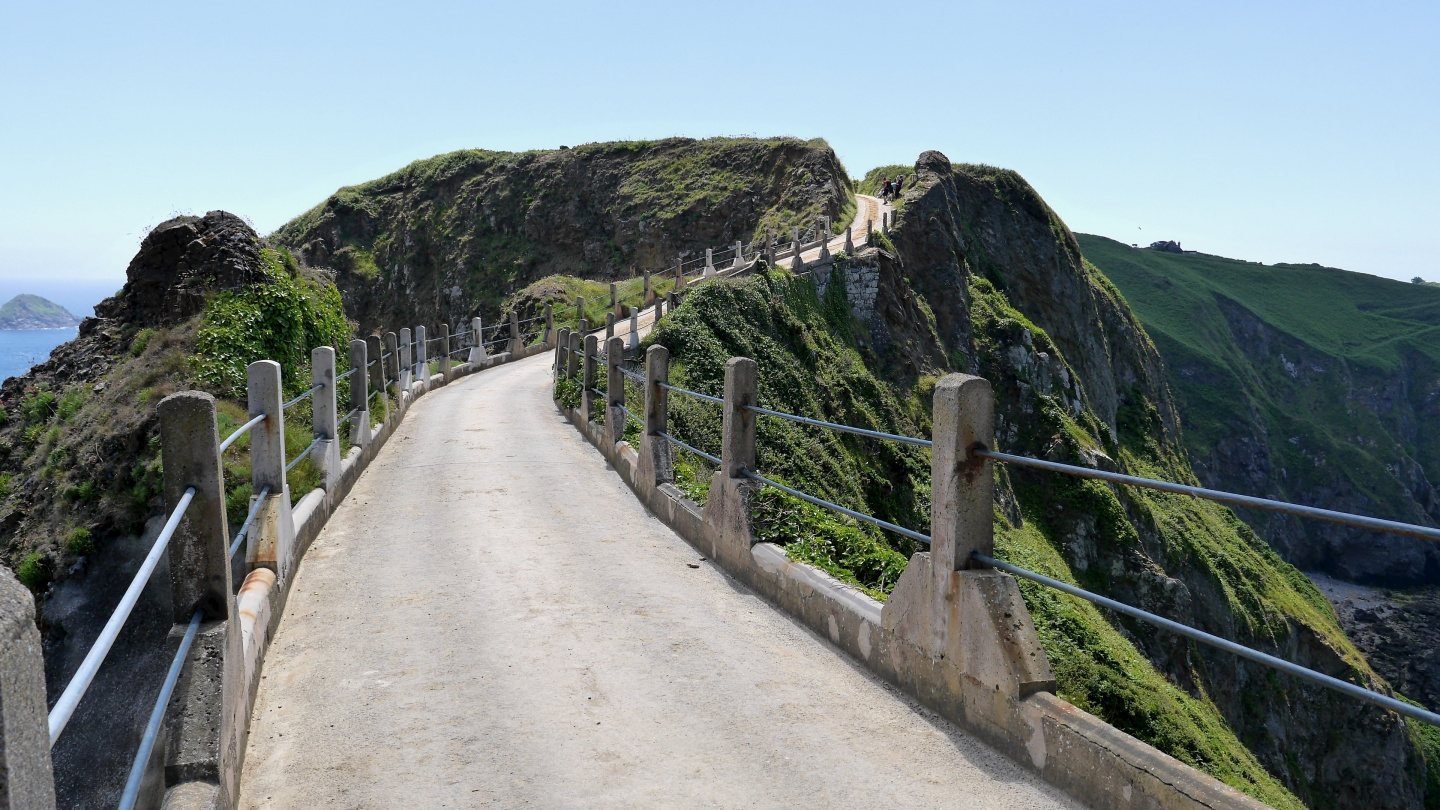
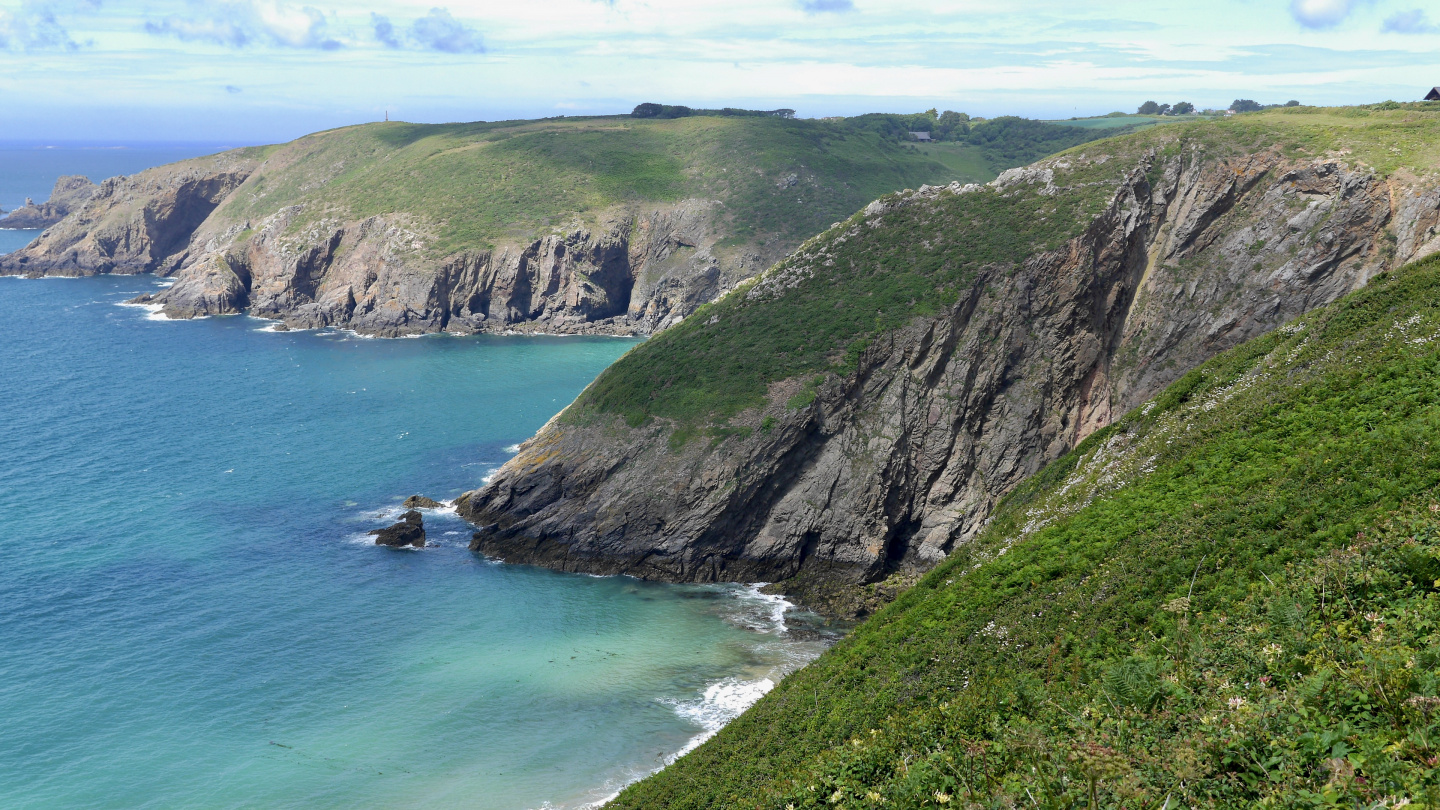
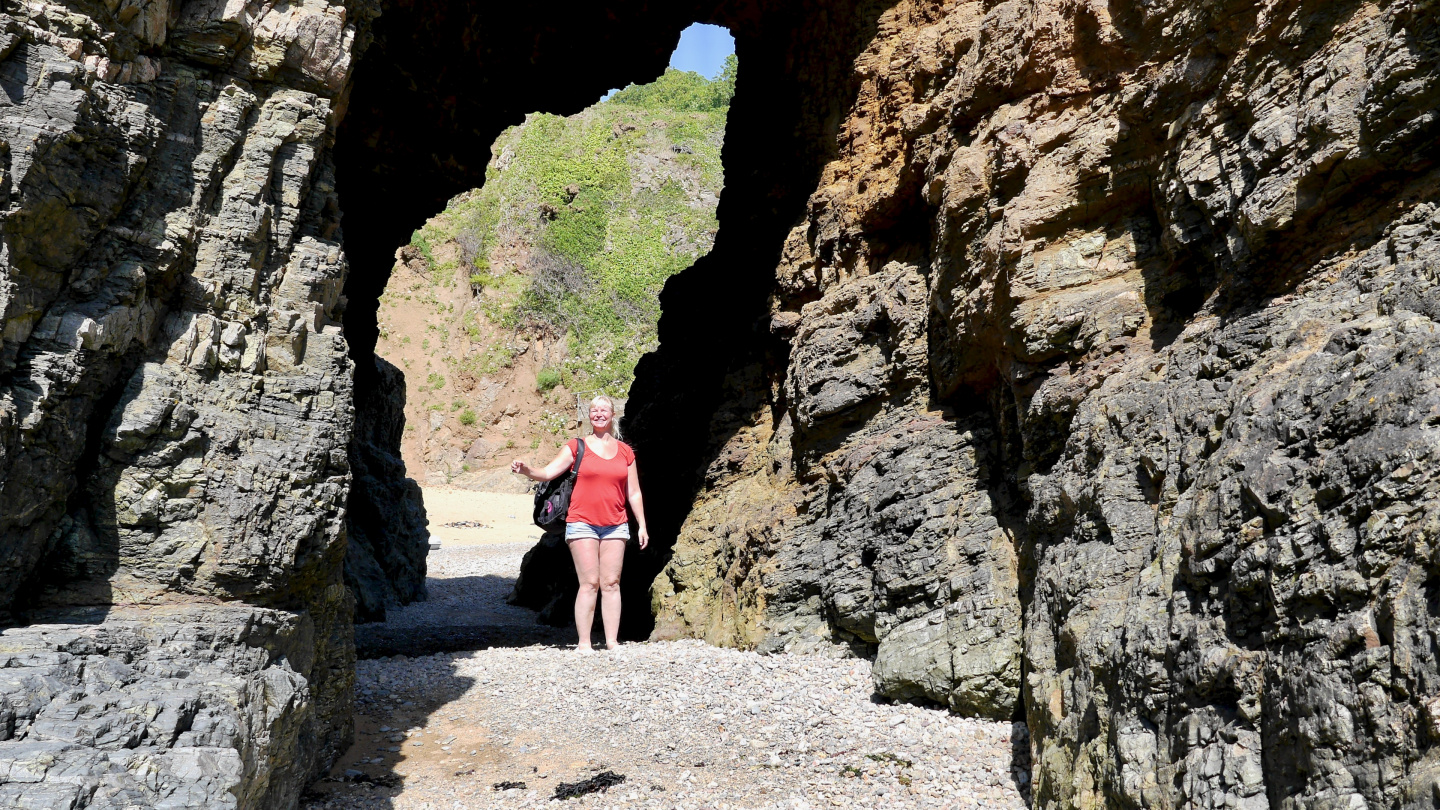
After the sunny tour of Sark we returned to the boat. We weighed the anchor and set course to Saint Quay Portrieux. After sailing for an hour we started the engine. The current was pushing us east towards St Malo and the wind was from west. We decided to pass the tacking and used engine for motorsailing instead. This way we’d arrive in early morning hours.
The passage was comfortable and we passed the breakwater at two in the morning. To our big surprise we were greeted by harbour staff in a dinghy, who showed us a berth for mooring even at these small hours. In the morning we would never have guessed that we spend the next night in France.

